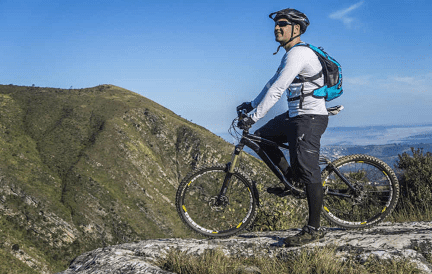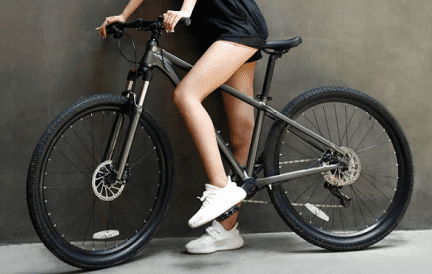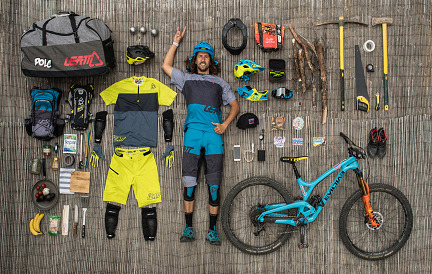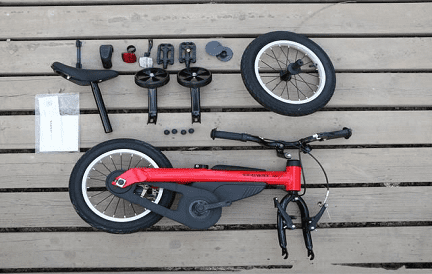Mudguards are a common accessory on any quality mountain bike, so that’s probably why you need to find the best MTB fenders. I’ve done a side-by-side comparison of several different models and consulted with some experts in the bike industry. Here’s an introduction to the 8 best MTB fenders (including the best MTB rear Mudguard) – choosing the right one will change the way you ride.
- Best MTB Mudguard: Protect Your Body and Bike from Mud
- 8 Best MTB Mudguard Recommended
- Dos and Don’ts of Mountain Bike Fenders
Best MTB Mudguard: Protect Your Body and Bike from Mud
Why You Need Fenders
Mountain biking is a fun and physical activity, especially in the off-season. These bikes are light and fast, but also susceptible to mud. Mountain bike fenders are an important accessory for mountain bikes that help protect you from debris or mud splashed by your bike. So if you want to get the most out of your mountain bike riding, you need the best mountain bike fenders on your bike.
When the bicycle moves forward, the rotation of the rear wheel drives the mud to rotate with the wheel. Without the rear fenders, mud could splash on people due to inertia. However, the fenders change the direction the mud is moving so it no longer moves up. In addition, the rear fenders scrape off a portion of the mud, preventing excess mud from sticking to the wheels.
What Are The Best Mtb Fenders
A good fender can significantly reduce the amount of spray coming out of the front wheel, not only protecting you from mud coverage but also protecting your bike and fork seals. Installing fenders will keep you clean, and dry, and prevent your goggles or glasses from getting covered in dirt.
The best MTB fenders are easy to install, keep the front wheel from splashing, and are strong enough to snap back into shape when folded in a crash. We should also start thinking more about the environment, as a simple 100% plastic part we want the shield to be made of recycled material.
Are There Different Types Of Fenders
In the market, there are different types of fenders, some of which cover a large area of the wheel, while others are small and light to protect some specific parts of the bike. They each have their own pros and cons and we can decide what fender we buy based on our needs i.e. what we want to do with the fender and what we want to protect with it.
Rear Fender
The rear fender can be attached to the saddle, Seatpost, and wheels of the bicycle. Their main function is to protect the back of your body from mud.
Can Be Installed Under the Saddle: These fenders will only protect your back, but as an advantage, they are very easy to install, lightweight, and small. In other words, they are incredible!
Attachable to Seatpost: In this case, the fenders are lower and closer to the wheel, which will give us better protection. They cover a larger wheel area, so they will be longer than other types. They fit easily into the Seatpost, so you can assemble and disassemble them in seconds.
Attachable via Carabiner and Rubber Straps: These are the largest we could put on the rear wheel. They give us a lot of protection from mud splashes, but they’re not too light to hold back with branches.
Front Fender
The front fender is attached to the front fork and plays an important role in the maintenance of the bike. They will protect the fork, frame, and drivetrain from mud splashes.
Enduro: This type is similar to the Ass Saver, but they come equipped on the fork, protecting your chest and legs from splashes, while also protecting the fork joints and mud suspension. Lightness and aerodynamics are its biggest advantages.
Full Protection: These fenders are also attached to the fork, but they are much larger than the enduro and offer the best protection. Your fork and suspension will be fully covered and protected. In some of these fenders, you can choose whether to equip only the front, the rear or both.
Race Face Mud Crutch: An ingenious way to protect our forks from mud. Like a shield, this type of fender provides enough protection to keep the fork and suspension on our bikes from the mud. Very light, but offers little protection to cyclists.
8 Best MTB Mudguard Recommended
What should we consider when choosing fenders? Many people may think that there is nothing to consider when choosing our fenders as they are just an anti-mud “shield”. But if we didn’t pick the right fenders, it would be a problem if they hit the tires, so we wouldn’t be able to use them. Here’s a guide on how to choose the one that’s best for you:
Durability: Look for rear fenders that can withstand harsh weather conditions. If you regularly ride in the rainy season, look for mountain bike rear fenders made of durable materials like plastic or metal.
Weight and Size: If you are looking for the best MTB fender rear, it should be lightweight so that you feel a burden while riding. It should also be small enough to fit your bike frame and not get in the way of pedaling.
Installation: Make sure the MTB rear fender can be easily installed without additional tools. Also make sure it comes with an instruction manual on how to install it properly, so you can remove it on a sunny day and install it when the ground is wet or it might rain.
Compatibility: The compatibility of this model with your bike is very important so you can install fenders. Generally speaking, there is no problem with the rear fender as it is hooked to the seat tube or the seat itself. But usually, there are more incompatibilities with front fenders, as many models have to fit in the fork holes, and not all models are wide enough.
Components and Location: It’s important to know if we want the fenders that cover just the front of the wheel, the rear portion of the fork, or just the fork.
With that in mind, we have several options for you.
Pick 1: Crud Products XLR Rear Fender – Extra Length
Compatible with any bike with a Seatpost diameter between 24mm and 32mm.

Attachment: Attached to the Seatpost, is a single bolt
Weight: 150g
Pros: Installed in a minute without removing the Seatpost.
Cons: Aluminum nuts and bolts may be overtightened and require heavy grease.
Crud Raceguard Rear Mudguard can well protect the rear wheel of the mountain bike from the erosion of mud. Crud Raceguard Rear Mudguard is made of plastic, which is not only flexible but also stiff enough not to be bent from too much mud. It is one of the best rear fenders on the market and a must for winter riding.
Latest deals
Pick 2: Mucky Nutz Rear Fender
Plastic material and unique design to fully protect your rear wheel and mountain bike.


Attachment: Velcro
Weight: 80g
Pros: It is the lightest adjustable rear fender on the market.
Cons: Installation is a little more cumbersome.
The Mucky Nutz rear fender uses recycled plastic material, making this product one of the lightest on the market. And this rear fender is compatible with most types of mountain bikes. Meanwhile, the Mucky Nutz rear fender is removable, which means it can be installed when needed, removed and folded for storage when not needed.
Latest deals
Pick 3: Marsh Gurad
Marsh Gurad is a product specially designed for the World Cup circuit.
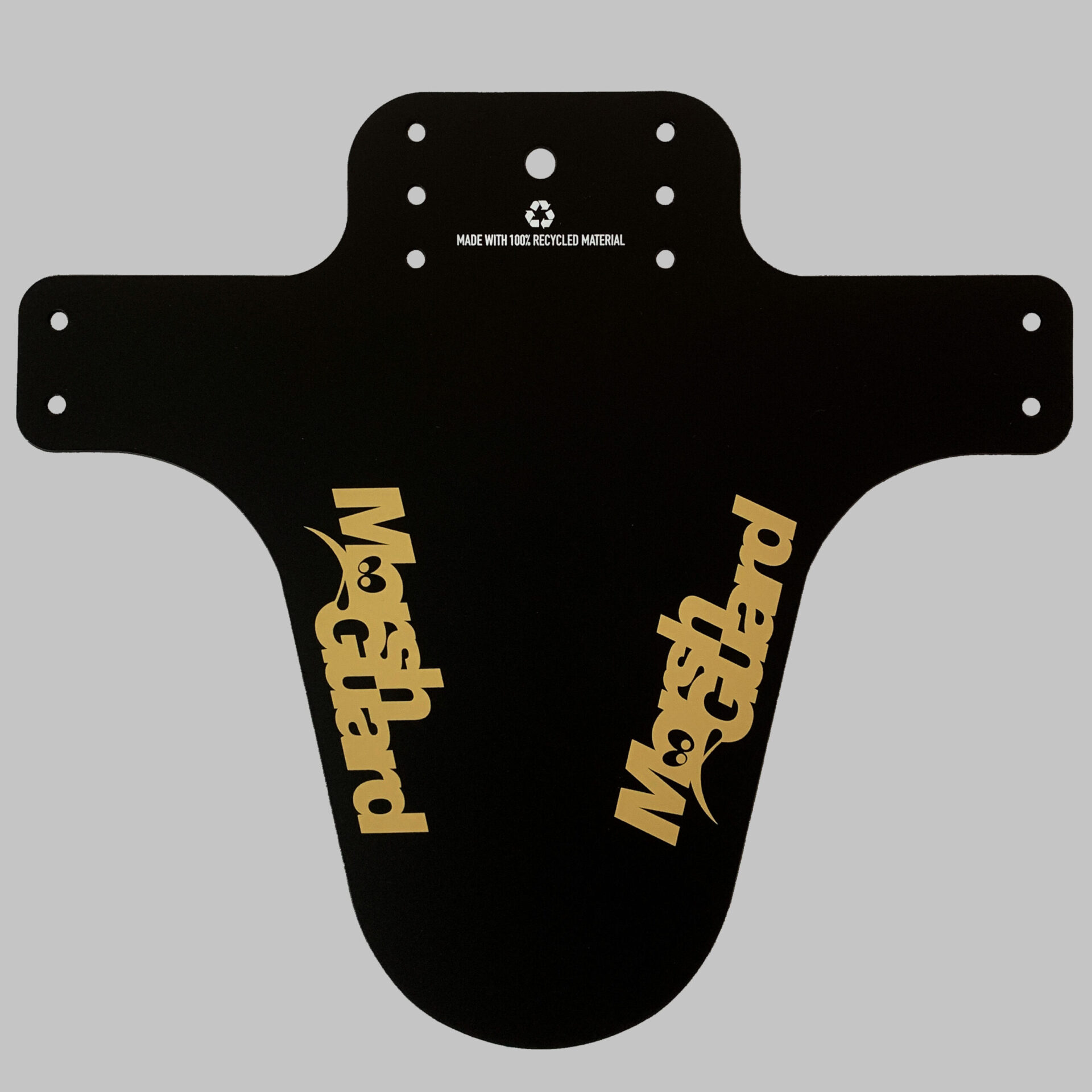

Attachment: Cable Ties
Weight: 57g (without cable ties)
Pros: Small size, simple application, high work efficiency
Cons: The product is a fixed model, so its size and shape cannot be modified.
Marsh Guard is made from a cutting board. It is light, flexible, unobtrusive, aerodynamic, and strong enough to withstand pressure washing at least 10 times a day. Also, Marsh Guard has cable ties for quick and easy removal and reinstallation.
Pick 4: Zefal No-Mud Universal Front or Rear Mudguard
Zefal No-Mud Universal Front or Rear Mudguard has been praised by many major cycling magazines for its simplicity and effectiveness.


Attachment: Zip ties
Weight: 189g
Pros: Universal front or rear mudguard.
Cons: For off-road, the Zefal Universal Mudguard may have a small coverage area and won’t keep out all the mud.
Universal front or rear mudguard is suitable for front and rear wheel. It won’t stray off course, get in the way of riding, dismounting, or interfere with rear suspension travel. It is also strong enough to handle the rough and bumpy situations of modern off-road riding. Further, Rear Mudhugger can be used in all weather conditions, which helps you train hard and stay comfortable for longer.
Latest deals
Pick 5: Syncros Trail Fender
Made from a high-quality composite that is impact-resistant.


Attachment: 2-bolt direct-mount
Weight: 107g
Pros: Manufacturer’s Warranty 2 Years
Cons: only one size
Syncros Trail Fender is made from a high-quality composite that is impact-resistant. It can be customized to fit the rear of the mountain bike, and it can get a very clean look without zippers. The highest level of integration, durability, and mud resistance are in this MTB rear fender.
Latest deals
Pick 6: SKS X-Blade Rear Fender
Suitable for mountain bikes.


Attachment: Bolt installation
Weight: 227g
Pros: It has an adjustable installation angle to fully cover the rear wheel.
Cons: Fender bolt installation requires a little time and mechanical experience.
SKS X-Blade Rear Fender features a single-blade design that sits above the rear wheel to keep out spray, mud, and other debris, and a quick-release powerband system fits most seat posts.
Latest deals
Pick 7: Winmoon Adjustable Bike Fender
For 24-29″ mountain bikes and ATVs.


Attachment: a kit
Weight:360 g
Pros: Fenders can be flexibly adjusted to the angle between the fenders and tires, no maintenance tools required!
Cons: Warranty information is missing.
The Winmoon Adjustable Bike Fender has many advantages including simple operation and ease of use. Price concessions while ensuring product quality.
Pick 8: M-Wave Mud Max Fat Bike Mudguard


Attachment: no
Weight: 390g
Pros: The M-Wave Mud Max Fat Bike Mudguard has a glossy finish and strong splash resistance. Whether it’s to make your mountain bike cooler or more practical, it’s an excellent choice.
Cons: It is not recommended for aggressive driving on rough mountain roads.
Dos and Don’ts of Mountain Bike Fenders
Installing fenders is a must for riders who need to ride on muddy roads to avoid and reduce the impact of wet conditions on riding. So what are the precautions for mountain bike rear fenders?
How to Install Fenders on Your MTB
Once you decide to install fenders on your mountain bike, you have two options: rear fenders or full-length fenders. While the first option is less expensive, it also won’t offer complete coverage. Therefore, if you want your bike to stay completely clean when it rains, you should opt for a full-length mudguard. There are various models on offer depending on which brand or model of your bike you own.
All you need is a screwdriver and some patience to do the job correctly. The first step involves attaching the clips that come with the mudguard to the seat post. I will recommend that you use a rubber strap as well as avoid scratches. The next step is to attach the mounting bracket to is clip using screws and a screwdriver. Once you’re done with these steps, attach the mudguard itself to this mounting bracket and tighten everything with a wrench. Finally, attach the silicone bands that come with it onto the fender struts and road bike training wheels.
Will My MTB Fender Break in A Crash
Plastic is often the material of choice for the manufacture of rear fenders.Plastic is lighter than metal and easier to manufacture, but it may crack in a crash.
Suspension forks can also absorb some of the impacts from a crash, which will help prevent your mudguard from cracking.
If you do have a crack in a plastic mudguard, depending on how bad it is. You can either try to fix it yourself or replace it with a different one.
You can try to fix cracks by applying glue (like superglue) or Crazy Glue. This should work if the crack is just a small one or two. You can apply glue with a q-tip or small brush if the crack is narrow enough. Use tweezers to hold the crack open while you apply glue. After the glue dries, test the mudguard for damage in a safe place before using it again. It’s possible that even after you repair it, the mudguard could break in another crash.
Replacing your mudguard may be easier than trying to fix its cracks. You’ll need to make sure that you get the same kind of mudguards as before. You have to look at your old one carefully. And make sure that you get an identical replacement or one with similar features.
How much Clearance is Needed Between the Fenders and the Tires
When choosing the best MTB rear mudguard you need to decide if you want to have clearance between the frame and the tire. There are many types of mountain bike rear mudguards available on the market. But which one is the best MTB rear mudguard for your needs?
Tire clearances vary from model to model, keep this in mind when purchasing your next set of mountain bike rear mudguards. You want to make sure that you can get full coverage from the mudguards. If you’re buying a pair of mountain bike rear mudguards for a new set of tires, you also want to make sure there’s enough room for larger tires to fit by the mountain bike rear mudguards.
The amount of clearance needed will vary depending on how big your tires are and what type of terrain you’ll be riding in. If you’re on smooth single-track trails then you should have plenty of clearance between your tires and the mudguards but if you’re riding off-road in rocky or muddy trail conditions then you’ll probably need more room between your tires and your mountain bike rear mudguards.
Do Rear Mudguards Fit Any Bike
Many people who live in areas that experience a lot of rain and mud will be looking for the best MTB rear mudguard. Mudguards are to keep your cycling clothing and shoes dry, as well as protect you from the elements. There is no point in investing in expensive cycling gear if it is going to break because of the weather conditions. Mudguards can fit on any type or size of bike, which means that anyone can benefit from them. The most important thing when choosing mudguards though is to ensure that they are compatible with the type of tires that you have on your bike.
There are different types of mudguards available, so there is sure to be something that will match your needs. There are long flaps at the back and front which offer protection from all angles. Guards exist on the market specifically to protect your seating area.
The right guards for you will depend on how often you cycle and what level of protection you need. If you live in an area where there is a lot of rain and mud then full-length guards might be necessary for maximum protection. In this instance, a set of rear and front guards would offer better coverage than just having one or two at the back or front. On the other hand.
How to Clean and Maintain the Rear Fender
Mountain bike rear mudguards are an important part of your bike that keeps you dry and clean. They are integral parts of any mountain bike to prevent the rider from getting dirty, especially when riding in wet conditions. However, if you don’t properly maintain them, they will break easily. So how often do you need to clean your mountain bike’s rear mudguard?
In order to clean your mudguard, I advised that you remove it from the frame and then clean it thoroughly with water and soap. If you do not remove it from the frame, then there are high chances that the soap might get into the tube and affect its functionality. After cleaning it with soap, dry it with a towel and then put it back on the frame. If you still have questions about how often you should clean your mudguard, then feel free to ask them in the comment section below.



